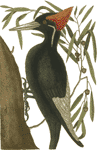Natural Resources, School of
Document Type
Article
Date of this Version
2012
Citation
Published in Micron 45 (February 2013), pp. 145–149; doi: 10.1016/j.micron.2012.10.018
Abstract
This paper presents and discusses archaeological samples of Pediculus humanus capitis nits/eggs in Arica, northern Chile, dating between 2000 B.C. and A.D. 500. Eight samples of nits/eggs taken directly from seven mummified bodies of both the valley and the coast of Arica, were collected and studied. Samples were analyzed with scanning electron microscopy (SEM), uncoated, using low and variable pressure modes. The aim was to study the morphology of the nits/eggs, the different degrees of preservation and their research potential. All samples were in good external condition and due to manipulation before SEM analysis, the oldest ones were fractured allowing the observation in situ of the hatching ad portas of an embryo. This inside view of the egg allowed observation and identification of microstructures of the embryo such as abdominal and thoracic spiracles and claws. In the most recent and best preserved samples, external structures characteristic of the egg such as aeropyles and operculum were observed. SEM can contribute significantly to the study of ectoparasites that affected ancient American populations and in this particular case to illustrate the stages and morphology of Andean archaeological specimens of P. humanus capitis.


Comments
Copyright © 2012 Elsevier Ltd. Used by permission.